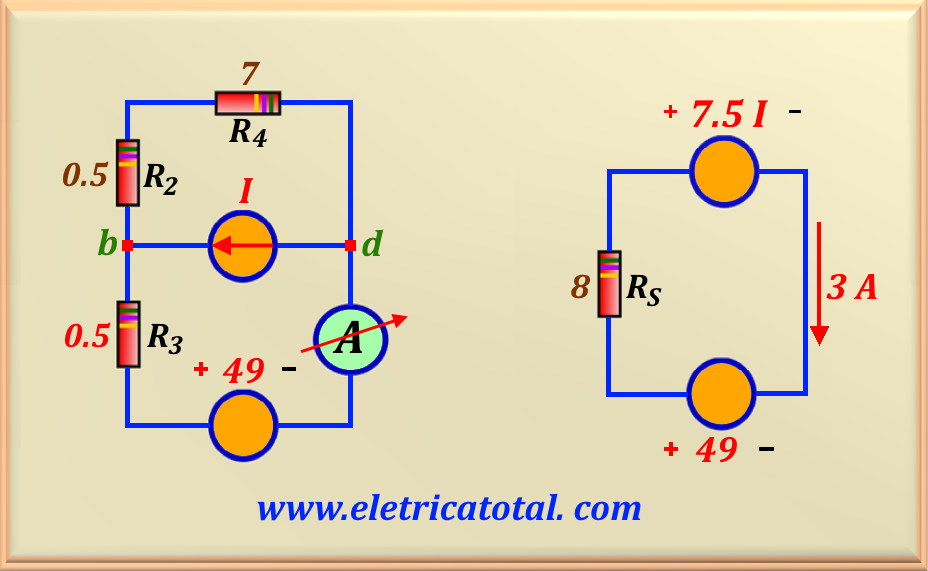Problem 11-12
Source:
Problem 37 and 60 - List of
Electrical Circuit Exercises I - School of Engineering - UFRGS - 2013 -
Prof. Dr. Valner Brusamarello.
In the circuit shown in Figure 11-12.1, it is known that the ammeter A measures 3 A.
Determine the value of the current source I.
Solution of the Problem 11-12 -
Method of Transforming Sources
When solving this problem, it is important to remember that an ideal ammeter has zero internal resistance. Taking this into consideration, we realize that
R5 and R6 can be eliminated from the circuit, as they are short-circuited by the ammeter. Furthermore, it appears that the current
i that circulates through R6 is nullified. As a consequence, the current source 5 i (on the left of the circuit) has its value equal to zero.
And as we know, a zero value current source is an open circuit. Therefore, it can be removed from the circuit, as well as R1 which is in series with this source. Note that the current source I2 which is in series with R6 is short-circuited and can be eliminated from the circuit. Therefore, we can simplify the circuit above as shown in Figure 11-12.2.
From the circuit we see that R2 and R4 are in series. Therefore, we can add their values obtaining a resistor of 7.5 Ω. In this case, we have a current source in parallel with a resistor. Then it is possible to use source transformation and obtain a voltage source of 7.5 I in series with a resistor of 7.5 Ω.
And this 7.5 Ω resistor is in series with the resistor R3 = 0.5 Ω. So, adding their values we obtain a resistor of 8 Ω which we call RS, as can be seen in the circuit on the right in Figure 11-12.2. Note that a series circuit resulted and, from the information given by the ammeter, we know that a current of 3 A circulates in this circuit. Therefore, using Kirchhoff we will determine the value of I, or:
Solving this equation we find the value of I.



